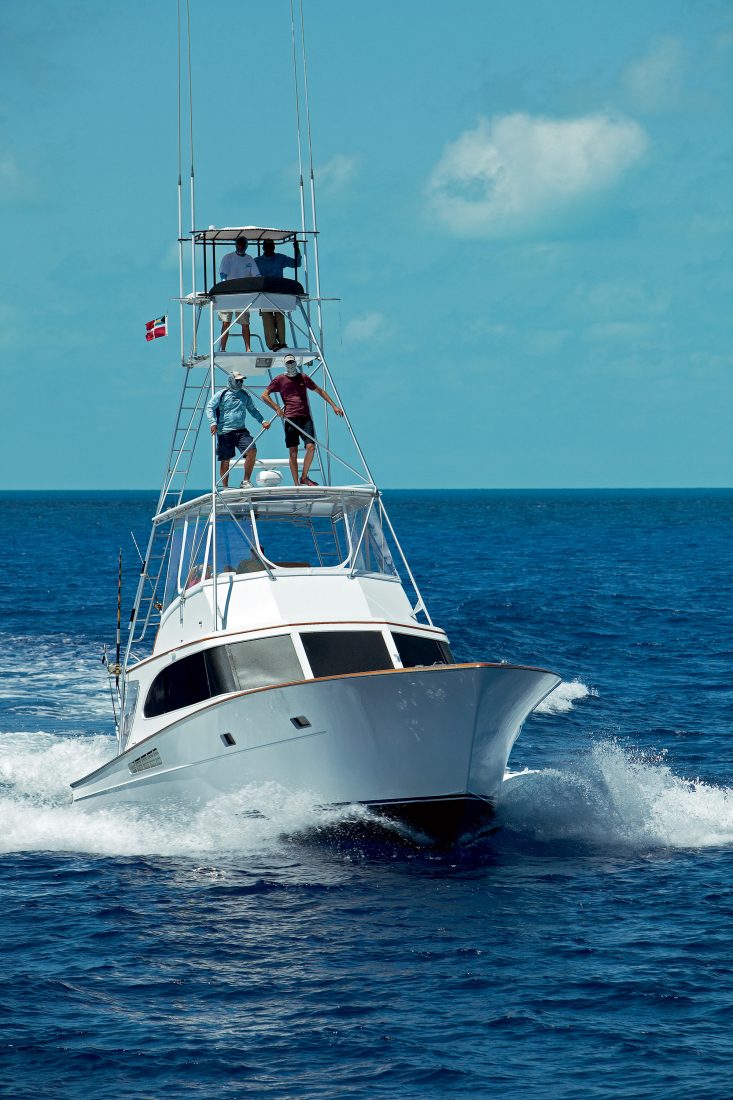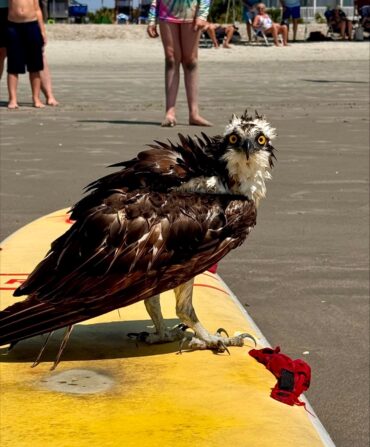In the mid-1900s, on the posh Bahamian enclave of Cat Cay, big-game anglers with deep pockets would gather each year for a tournament like no other. A channel in the waters southwest of Bimini acted like a funnel for giant bluefin tuna following an ancient migratory route. When conditions were just right—a steady breeze pushing the swell from the south, with bright skies and clear water—the massive fish would rise up just below the surface, their silhouettes visible as they rode the waves northward past the Great Bahama Bank.
With a school spotted, the captain would maneuver the boat to intercept, and it became sight fishing of the highest order—the how of this game as important as the what. One angler, one rod, and one bait, dropped enticingly on a path that would intersect the moving beasts. Something like stalking bonefish, if bonefish weighed a thousand pounds and could swim fifty miles an hour.
Such was the lure of Tuna Alley that in its heyday, the Cat Cay Tuna Tournament, which began in 1939, drew dozens of boats and such legendary captains as Allen and Buddy Merritt. Anglers competing mostly for honor and trophies could land scores of behemoth tuna. Moreover, sportfishing for tuna and other pelagics like marlin and sailfish became a boon to the local economy. Bahamian guides would crew the vessels, and hospitality businesses flourished. But it was not to last. As the decades wore on, the bluefin’s popularity as table fare burgeoned, especially as high-grade sushi for Japanese markets. Commercial fishing caused natural stocks to plummet, and as they did, so did the tourney, dying a slow death before eventually disappearing for good. Or so it seemed.

Photo: Courtesy IGFA Hall of Fame
A typical catch in days gone by.
Last year, the Cat Cay Yacht Club, in partnership with the sunglasses company Costa Del Mar, resurrected the tourney, drawing competitors back to Tuna Alley for the first time in more than two decades. Only this time, they were also looking toward the future. Scientists from the Large Pelagics Research Center were on hand to implant tracking tags on any fish caught, which would then be released in an effort to provide greater understanding of their migration patterns, as if following herds of aquatic buffalo.
Several boats returned to the Alley, plowing meticulous patterns in search of fish. Sure enough, the tuna had not disappeared. About sixty fish were spotted over the tournament’s three days. Radio chatter would send crews scrambling off the tuna towers to the decks. From a chase boat, I watched Captain Ken Hinsley swing a bait through the zone—the tension palpable from a half mile away. But there would be no tug. Only faint, massive shadows disappearing directly beneath our boat. A lack of wind and glassy seas meant conditions weren’t “just right.” But although the teams were blanked, they weren’t beaten.
“The fish are here, so that gives us reason to be optimistic,” Hinsley says. “Maybe not in the numbers that they were years ago, but there are tuna in the Alley. And it’s worth putting in the time and effort, because we can help these fish rebound.”
The plan is to forge on. Cat Cay will host the tournament again in late May, with a larger goal in mind. Although the old black-and-white images of tuna piled on the docks at big-game tournaments might seem far removed from the conservation ethic, modern catch-and-release sportfishing can in fact play a significant role in helping these fish rebound.
And of course, there’s another reason fishermen might find themselves drawn to this place. “There’s nothing like the fight of a bluefin tuna,” Hinsley says. “It’s worth paying dues to experience.”








